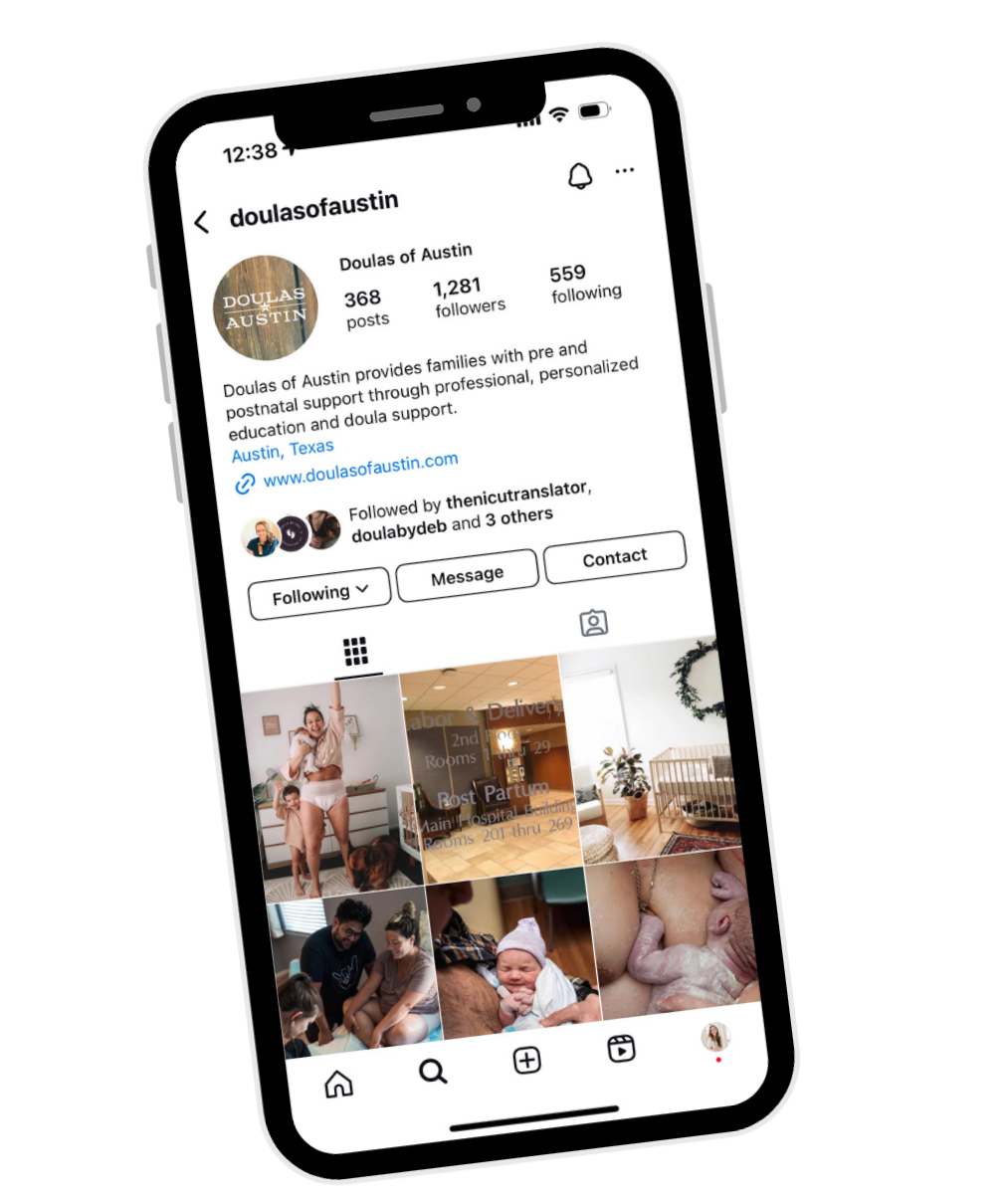Comprehensive Doula Services In Austin, TX & Online
Expert, personalized support for birth, postpartum, and newborn care. Based in Austin, Texas and available online, anywhere.
Transparent Education. Realistic Guidance. Personalized Support.
Let’s make sure you have the knowledge you need, and the support you deserve.
Whether you’re looking for childbirth education, postpartum planning, newborn care classes, birth or postpartum doula support, virtual consultations, or postpartum doula certification, you’ve found the right place…and I’m so glad you’re here.
Each of our services are grounded in an integrative approach where evidence-based science meets intuition, and clinical care meets human-centered care.
I bring the knowledge of a nurse, the lived experience of a mother, and the heart of a doula to every interaction, offering care that is both informed and genuinely supportive.
- ChiminhInformed. Prepared. Empowered.
Becoming a parent…it’s a lot. The joy, anticipation, love, and sometimes a whole lot of uncertainty and “what ifs.” But here’s what I want you to know - everything you’re feeling is completely normal, and you don’t have to figure it all out alone.
Your Support System
Together, we’ll make sure you know what to expect, both the essentials and the things no one talks about, so you can feel grounded in the realities of this experience and welcome motherhood feeling empowered and ready.
How We Can Help
Certified Birth Doula Services
With one goal in mind…to ensure you feel safe, supported, and fully informed - no matter how you bring your baby into the world. From a medicated hospital birth, homebirth, an induction, cesarean, or anything in between, we’re here to support you every step of the way.
Certified Postpartum Doula Services
Most of us prepare for labor and delivery with intention, but what about the days, weeks, and months after? Postpartum is a crucial time for recovery, learning, and adjusting to your new normal with a newborn. Having a plan for support makes it easier to care for yourself and your baby.
Education, Planning & Classes
Our private, virtual, and fully customizable sessions are expertly crafted to meet you where you are, offering evidence-based guidance without any hospital or provider bias. Whether you’re looking to build confidence, set realistic expectations, or get grounded in the essentials, this is your space to gain knowledge and practical skills that truly support you.
Postpartum Doula Certification
Created and personally led by a mother-baby nurse turned doula, this certification program is designed to help you become truly exceptional in your work. Just like postpartum doula care, this training is personal, supportive, and rooted in real connection - because how you learn should reflect how you serve.
★
Virtual Consultations
Information overload is real. What’s most helpful is having someone you trust to sort through it all with you. Someone who can offer perspective, evidence-based guidance, and clear answers that actually apply to your experience. As a seasoned nurse and fellow mama, I’m here to help you make sense of all the questions, what-ifs, and “is this normal?” moments.
Congratulations, You Just Made A Nurse Friend!
Hi, I’m Chiminh – registered nurse, certified doula, educator, and proud mama of two, and I’m so glad you’re here.
My intention is to create a space where you can show up exactly as you are - where every feeling is valid and no question is off limits. I’m here to honor your experience, normalize the hard moments, and help you set grounded, realistic expectations. Most of all, I want you to feel prepared and supported on this journey, with tools, resources, and steady guidance every step of the way.
A look inside Doulas of Austin
What Families Are Saying
★ ★ ★ ★ ★
“As a new dad, I like to joke that “babies don’t come with instruction manuals!” But with this team in your wife’s corner you’ll actually feel like you’ve got a plan, and maybe even gain a little confidence going into delivery-mode, whatever that looks like for you.” - Patrick R.
★ ★ ★ ★ ★
“Hiring Chiminh was one of the best decisions I've ever made in my life! I was always terrified of having a baby but now I've completely changed my perspective.” - Nadia T.
★ ★ ★ ★ ★
“As first time parents, we couldn’t be more thankful to have worked with Chiminh and Doulas of Austin.”
-Jaclyn L.
I’m On Social Media
Give Doulas of Austin a follow—I’d love to see you over there!
Doulas Of Austin Supports All Types Of Families, Prioritizing Respect, Kindness, And Care For Everyone.
Looking For a Truly Meaningful Gift?
Instead of more outfits and baby gear, give something that will make a real difference - experienced, professional doula support. It’s one of the most impactful ways to show up for new parents. Expecting yourself? Add doula support to your registry and let loved ones contribute to the care you deserve.









